-
×
 Toni Hansen – Mastering Momentum Gaps
$17.00
Toni Hansen – Mastering Momentum Gaps
$17.00 -
×
 Scalp The Markets – Scalping Is Fun
$13.00
Scalp The Markets – Scalping Is Fun
$13.00 -
×
 Taki Moore – The Clients Program
$27.00
Taki Moore – The Clients Program
$27.00 -
×
 Matt Furey – The Original Matt Furey Email Copywriting Seminar
$29.00
Matt Furey – The Original Matt Furey Email Copywriting Seminar
$29.00 -
×
 Doyle Exchange Advanced Day Trading Course
$8.00
Doyle Exchange Advanced Day Trading Course
$8.00 -
×
 Aaron Fletcher - Sales Script 2.0
$14.00
Aaron Fletcher - Sales Script 2.0
$14.00 -
×
 Jerry Acuff – Selling Excellence by Thinking Like a Customer
$17.00
Jerry Acuff – Selling Excellence by Thinking Like a Customer
$17.00 -
×
 High Performance Trading – Profit Freedom Blueprint
$15.00
High Performance Trading – Profit Freedom Blueprint
$15.00 -
×
 Shineon Stars – From 0 to Sales on Amazon In 30 Days
$24.00
Shineon Stars – From 0 to Sales on Amazon In 30 Days
$24.00 -
×
![Bring The Seo [August 2024]](https://genicourses.com/wp-content/uploads/2024/09/Bring-The-Seo-August-2024-3-500x500.jpg) Bring The Seo [August 2024]
$19.00
Bring The Seo [August 2024]
$19.00 -
×
 Ole Lehmann – AI Audience Accelerator
$14.00
Ole Lehmann – AI Audience Accelerator
$14.00 -
×
 Tony Hill – Fatstacks Content Renaissance
$15.00
Tony Hill – Fatstacks Content Renaissance
$15.00 -
×
 Chris Leet Supply And Demand Trading Method
$17.00
Chris Leet Supply And Demand Trading Method
$17.00 -
×
 Exotic Options Trading – Frans De Weert
$14.00
Exotic Options Trading – Frans De Weert
$14.00 -
×
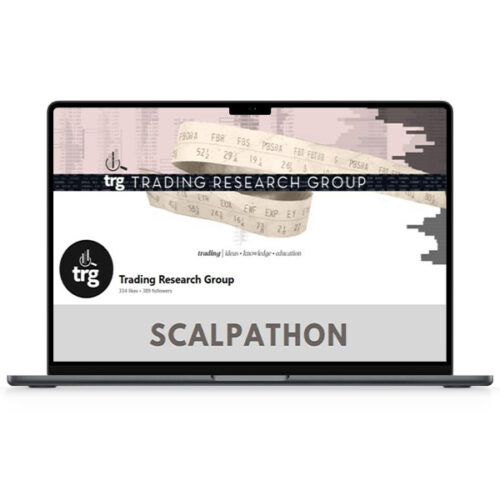 Trading Research Group – Scalpathon
$42.00
Trading Research Group – Scalpathon
$42.00 -
×
 Donald Spann – Call Center Cash
$22.00
Donald Spann – Call Center Cash
$22.00 -
×
 Reforge.com – All Courses Bundle
$21.00
Reforge.com – All Courses Bundle
$21.00 -
×
 Date IQ 2.0 – Jon Zherka
$24.00
Date IQ 2.0 – Jon Zherka
$24.00 -
×
 The Genius Trader Webinar
$14.00
The Genius Trader Webinar
$14.00 -
×
 Pedro Moreira – The Ultimate Template Bundle
$12.00
Pedro Moreira – The Ultimate Template Bundle
$12.00 -
×
 Felix Tay – Your First $10k Workshop
$23.00
Felix Tay – Your First $10k Workshop
$23.00 -
×
 Stonhill Forex 201 Advanced Course
$13.00
Stonhill Forex 201 Advanced Course
$13.00 -
×
 Zain Shah - £0 to Full-time Amazon Seller
$24.00
Zain Shah - £0 to Full-time Amazon Seller
$24.00 -
×
 30-Day Insta Growth – Your Step-by-Step Guide to 10K+ Followers Instagram Growth Guide
$20.00
30-Day Insta Growth – Your Step-by-Step Guide to 10K+ Followers Instagram Growth Guide
$20.00 -
×
 Become a World-Class Coach by Corey Wilks
$19.00
Become a World-Class Coach by Corey Wilks
$19.00 -
×
 Patrice S Jordan – Bosses Build Business Credit Ebook
$17.00
Patrice S Jordan – Bosses Build Business Credit Ebook
$17.00 -
×
 Sean D’Souza – Suddenly Talented
$20.00
Sean D’Souza – Suddenly Talented
$20.00 -
×
 Pollinate Trading – Systems Mastery
$15.00
Pollinate Trading – Systems Mastery
$15.00 -
×
 Simpler Trading – The Haystack Options Method
$15.00
Simpler Trading – The Haystack Options Method
$15.00 -
×
 RJ Nestor – Your Road to Roam
$24.00
RJ Nestor – Your Road to Roam
$24.00 -
×
 Brandi Mowles – Conversion For Clients
$15.00
Brandi Mowles – Conversion For Clients
$15.00 -
×
 Nathaniel Drew – Frame by Frame Full Course
$22.00
Nathaniel Drew – Frame by Frame Full Course
$22.00 -
×
 Benjamin Hardy – The 12-Week Rapid Transformation Intensive
$24.00
Benjamin Hardy – The 12-Week Rapid Transformation Intensive
$24.00 -
×
 Gabe Ansel - Locked in Lead
$47.00
Gabe Ansel - Locked in Lead
$47.00 -
×
 Ai for Product & Fashion – Zamurovic Brothers
$20.00
Ai for Product & Fashion – Zamurovic Brothers
$20.00 -
×
 AdCon 2024 Event Replays
$12.00
AdCon 2024 Event Replays
$12.00 -
×
 CodeFast Course – Build your SaaS in 14 days
$37.00
CodeFast Course – Build your SaaS in 14 days
$37.00 -
×
 1st Man/1M – Marathon Mindset, Life Setup & Framing
$18.00
1st Man/1M – Marathon Mindset, Life Setup & Framing
$18.00 -
×
 The Real Estate God – The System Become Your Own Private Equity Firm
$24.00
The Real Estate God – The System Become Your Own Private Equity Firm
$24.00 -
×
 AuthenticFX – Price Action Engine
$11.00
AuthenticFX – Price Action Engine
$11.00 -
×
 Matthew Dicks – Storytelling Humor (Volume #1)
$19.00
Matthew Dicks – Storytelling Humor (Volume #1)
$19.00 -
×
 Joel Kaplan - Steal My Ads
$10.00
Joel Kaplan - Steal My Ads
$10.00 -
×
 NinjaTrader – Advanced Strategy Design Techniques Bundle
$18.00
NinjaTrader – Advanced Strategy Design Techniques Bundle
$18.00 -
×
 Mike Cooch – The Local Instagram Prospecting System
$22.00
Mike Cooch – The Local Instagram Prospecting System
$22.00 -
×
 GreckoThe1 Trading Course
$15.00
GreckoThe1 Trading Course
$15.00 -
×
 YouTube Automation WannerCashCow Accelerator
$40.00
YouTube Automation WannerCashCow Accelerator
$40.00 -
×
 Nick Hoffmann – Make eCom Work Program
$14.00
Nick Hoffmann – Make eCom Work Program
$14.00 -
×
 Paul R. Scheele – PhotoReading Deluxe Course
$17.00
Paul R. Scheele – PhotoReading Deluxe Course
$17.00 -
×
 Glenn Ackerman – Energy Awareness Training Level 1
$22.00
Glenn Ackerman – Energy Awareness Training Level 1
$22.00 -
×
 Melanie Ann Layer – The Impact Academy
$22.00
Melanie Ann Layer – The Impact Academy
$22.00 -
×
 W.D. Gann’s Square Of 9 Applied To Modern Markets (Lifetime Updates)
$31.00
W.D. Gann’s Square Of 9 Applied To Modern Markets (Lifetime Updates)
$31.00 -
×
 Aidan Booth & Steve Clayton – 123 Profit
$31.00
Aidan Booth & Steve Clayton – 123 Profit
$31.00 -
×
 FXC Trading – Holy Grail
$34.00
FXC Trading – Holy Grail
$34.00 -
×
 The MissionFX Compounding Course
$11.00
The MissionFX Compounding Course
$11.00 -
×
 Christina Beavers – The Reel Deal
$14.00
Christina Beavers – The Reel Deal
$14.00 -
×
 Adam Set – Exclusive Footprint and Market Profile
$29.00
Adam Set – Exclusive Footprint and Market Profile
$29.00 -
×
 Gusten Sun – Personal Brand X
$15.00
Gusten Sun – Personal Brand X
$15.00 -
×
 Strategyzer – Strategyzer Online Academy
$13.00
Strategyzer – Strategyzer Online Academy
$13.00 -
×
 Shri Kanase – Google Ads Mastery 2023
$25.00
Shri Kanase – Google Ads Mastery 2023
$25.00 -
×
 Content Editing 101 – AI Learning Guides and Editors – Erica Scheider and Rob Lennon
$48.00
Content Editing 101 – AI Learning Guides and Editors – Erica Scheider and Rob Lennon
$48.00 -
×
 Lattice Hudson – Social Selling Ads
$22.00
Lattice Hudson – Social Selling Ads
$22.00 -
×
 Humberto Malaspina – Day Trading and Swing Trading Futures with Price Action
$24.00
Humberto Malaspina – Day Trading and Swing Trading Futures with Price Action
$24.00 -
×
 How to Get GMBs Verified WITHOUT Video Verification in 2024!
$23.00
How to Get GMBs Verified WITHOUT Video Verification in 2024!
$23.00 -
×
 StockBee Bootcamp – European Members – March 2023
$18.00
StockBee Bootcamp – European Members – March 2023
$18.00 -
×
 Neil McCoy-Ward – The ULTIMATE Macro Economics& Stock Market Course
$20.00
Neil McCoy-Ward – The ULTIMATE Macro Economics& Stock Market Course
$20.00 -
×
 Nick Kozmin – Earn $100K Per Month In 3 Months Or Less As A Growth Consultant
$19.00
Nick Kozmin – Earn $100K Per Month In 3 Months Or Less As A Growth Consultant
$19.00 -
×
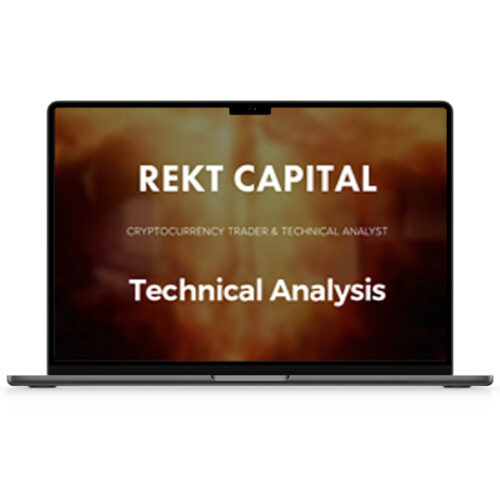 Rekt Capital – The Ultimate Bitcoin Investing Course (English)
$15.00
Rekt Capital – The Ultimate Bitcoin Investing Course (English)
$15.00 -
×
 Tradesmart – Nq Price Action Mastery
$16.00
Tradesmart – Nq Price Action Mastery
$16.00 -
×
 INNER CIRCLE MORPHEUS – Time Dilation Theory
$26.00
INNER CIRCLE MORPHEUS – Time Dilation Theory
$26.00 -
×
 Starting Your Salon Suites Business – Mychel Snoop Dillard
$26.00
Starting Your Salon Suites Business – Mychel Snoop Dillard
$26.00 -
×
 A.I Ads Machine + 10 Profitable Sales Funnels + The Digital Marketer’s Guide to ChatGPT
$17.00
A.I Ads Machine + 10 Profitable Sales Funnels + The Digital Marketer’s Guide to ChatGPT
$17.00 -
×
 Agency Fast Track 2024 Recordings
$17.00
Agency Fast Track 2024 Recordings
$17.00 -
×
 Smart Marketer – Smart Product Creation
$18.00
Smart Marketer – Smart Product Creation
$18.00 -
×
 Jordan Crawford – AI Agent course
$40.00
Jordan Crawford – AI Agent course
$40.00 -
×
 Matthew Owens – TRIFORCE TRAINING
$14.00
Matthew Owens – TRIFORCE TRAINING
$14.00 -
×
 Aaron Young – Get MORE Leads With Google Master Edition
$22.00
Aaron Young – Get MORE Leads With Google Master Edition
$22.00 -
×
 Madison (RSD) – 8 Weeks Conversation Mentoring
$24.00
Madison (RSD) – 8 Weeks Conversation Mentoring
$24.00 -
×
 Larry Williams – Forecast 2025
$24.00
Larry Williams – Forecast 2025
$24.00 -
×
 Dan Martell – Lightning Bolt Lead Gen Stack
$20.00
Dan Martell – Lightning Bolt Lead Gen Stack
$20.00 -
×
 Joseph Michael – Easy Course Creation
$15.00
Joseph Michael – Easy Course Creation
$15.00 -
×
 Sara Noel – The BTL Site Series Bundle
$21.00
Sara Noel – The BTL Site Series Bundle
$21.00 -
×
 Reedstrader – Stock Market Timing Workshop
$38.00
Reedstrader – Stock Market Timing Workshop
$38.00 -
×
 Josh Nelson – Seven Figure Agency Blueprint
$19.00
Josh Nelson – Seven Figure Agency Blueprint
$19.00 -
×
 Todd Brown - Your Winning Offer
$19.00
Todd Brown - Your Winning Offer
$19.00 -
×
 Tai Jaun – Instagram Hacks University 2.0
$21.00
Tai Jaun – Instagram Hacks University 2.0
$21.00 -
×
 Harlan Kilstein – Blackhat Facebook Traffic
$13.00
Harlan Kilstein – Blackhat Facebook Traffic
$13.00 -
×
 Julian Goldie – SEO Agency Roadmap
$25.00
Julian Goldie – SEO Agency Roadmap
$25.00 -
×
 Jeff White – UX Storytelling Toolkit
$20.00
Jeff White – UX Storytelling Toolkit
$20.00 -
×
 Adam Khoo – Value Momentum Investing Course
$17.00
Adam Khoo – Value Momentum Investing Course
$17.00 -
×
 Curious Refuge – The World’s First AI Filmmaking Course
$24.00
Curious Refuge – The World’s First AI Filmmaking Course
$24.00 -
×
 YouTube Hook Mastery
$19.00
YouTube Hook Mastery
$19.00 -
×
 The MMXM Traders Course 2023
$8.99
The MMXM Traders Course 2023
$8.99 -
×
 Jon Buchan – Charm Offensive Pro 2022
$14.00
Jon Buchan – Charm Offensive Pro 2022
$14.00 -
×
 Debbie Drum – AI Freedom + Update 1
$14.00
Debbie Drum – AI Freedom + Update 1
$14.00 -
×
 Loadedpotatooo Mentorship
$9.00
Loadedpotatooo Mentorship
$9.00 -
×
 Alyssa Brady – Winning at WordPress
$22.00
Alyssa Brady – Winning at WordPress
$22.00 -
×
 SMT FX Trading Course
$13.00
SMT FX Trading Course
$13.00 -
×
 Joel Kaplan – Steal My Ads 2022
$13.00
Joel Kaplan – Steal My Ads 2022
$13.00 -
×
 Laz Chavez & Richard Telfeja – AI Bot Masterclass 2023
$23.99
Laz Chavez & Richard Telfeja – AI Bot Masterclass 2023
$23.99 -
×
 Claircognizance by Lesley Phillips
$21.00
Claircognizance by Lesley Phillips
$21.00 -
×
 Tony Hill – Pinterest Keywords Gold
$22.00
Tony Hill – Pinterest Keywords Gold
$22.00 -
×
 FredTrading Academy – Money Making Bundle
$20.00
FredTrading Academy – Money Making Bundle
$20.00 -
×
 Passive YouTube – The Boring YouTube Strategy
$22.00
Passive YouTube – The Boring YouTube Strategy
$22.00 -
×
 Simpler Trading – Bulletproof Butterflies 2.0 Elite
$15.00
Simpler Trading – Bulletproof Butterflies 2.0 Elite
$15.00 -
×
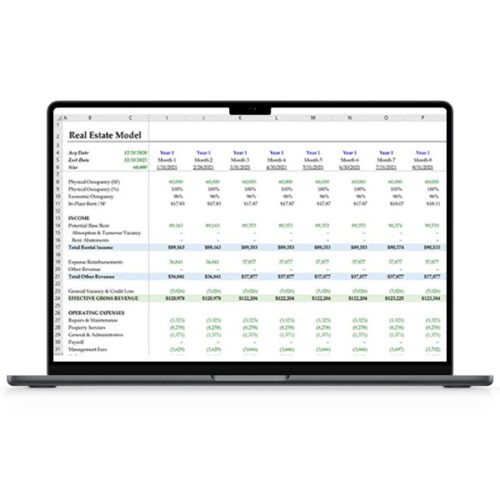 Wall Street Prep – Real Estate Financial Modeling
$20.00
Wall Street Prep – Real Estate Financial Modeling
$20.00 -
×
 Jose Torres – Ultimate Scaling Course
$22.00
Jose Torres – Ultimate Scaling Course
$22.00 -
×
 Barry Plaskow, Mayer Reich – Power AI Domination (PAID)
$34.00
Barry Plaskow, Mayer Reich – Power AI Domination (PAID)
$34.00 -
×
 Joe Soto – People Patterns Mastery
$19.00
Joe Soto – People Patterns Mastery
$19.00 -
×
 Trading Dominion – Portfolio investing
$35.00
Trading Dominion – Portfolio investing
$35.00 -
×
 Ken Stone – Introduction to Spiritual Mastery
$26.00
Ken Stone – Introduction to Spiritual Mastery
$26.00 -
×
 Breaking Into Wall Street – Oil and Gas Modeling
$28.00
Breaking Into Wall Street – Oil and Gas Modeling
$28.00 -
×
 MindValley – Smarter Not Harder
$15.00
MindValley – Smarter Not Harder
$15.00 -
×
 Market Delta-Footprint Deep Dive Course
$19.00
Market Delta-Footprint Deep Dive Course
$19.00 -
×
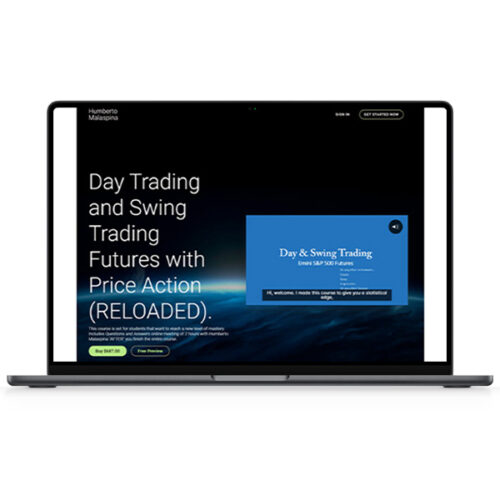 Humberto Malaspina – Day Trading and Swing Trading Futures with Price Action
$14.00
Humberto Malaspina – Day Trading and Swing Trading Futures with Price Action
$14.00 -
×
 Brent Charleton – Correction Method
$27.00
Brent Charleton – Correction Method
$27.00 -
×
 Mark Podolsky – The Investor’s Toolkit
$22.00
Mark Podolsky – The Investor’s Toolkit
$22.00 -
×
 Becca Luna – Passive Passion Project
$25.00
Becca Luna – Passive Passion Project
$25.00 -
×
 Brian Rose – Wealth Academy
$35.00
Brian Rose – Wealth Academy
$35.00 -
×
 Roland Wolf- A Wolf Day Trading Guide
$18.00
Roland Wolf- A Wolf Day Trading Guide
$18.00 -
×
 Marus FX 2023
$20.00
Marus FX 2023
$20.00 -
×
 Making Real Money – The Business of Commercial Photography – Fstoppers
$22.00
Making Real Money – The Business of Commercial Photography – Fstoppers
$22.00 -
×
 Mike & Laura – Scale Your Travel Blog
$23.00
Mike & Laura – Scale Your Travel Blog
$23.00 -
×
 Jason Fox – The Ultimate DM Course
$20.00
Jason Fox – The Ultimate DM Course
$20.00 -
×
 Diamant Capital 2024 – The Elite Strategy Course
$22.00
Diamant Capital 2024 – The Elite Strategy Course
$22.00 -
×
 Nick Kolenda – Marketing Courses Bundle
$20.00
Nick Kolenda – Marketing Courses Bundle
$20.00 -
×
 Ali Abdaal – Productivity Lab
$25.00
Ali Abdaal – Productivity Lab
$25.00 -
×
 Vawzen – The Viral Content Formula
$13.00
Vawzen – The Viral Content Formula
$13.00 -
×
 Clare Le Roy – SketchUp Beginner + Intermediate Course Bundle
$20.00
Clare Le Roy – SketchUp Beginner + Intermediate Course Bundle
$20.00 -
×
 Mark Hutchinson – Rewired Course
$14.00
Mark Hutchinson – Rewired Course
$14.00 -
×
 Ajit Nawalkha – Coaching Businesses
$15.00
Ajit Nawalkha – Coaching Businesses
$15.00 -
×
 Michael Breen – Training Mastery
$23.00
Michael Breen – Training Mastery
$23.00 -
×
 Matt Clark – The Omnichannel Machine
$24.00
Matt Clark – The Omnichannel Machine
$24.00 -
×
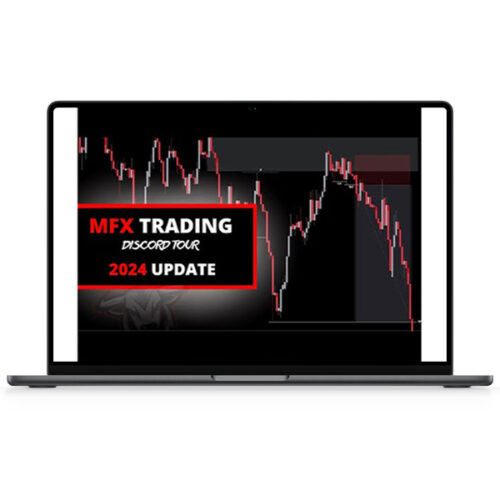 MFX Trading Mentorship
$15.00
MFX Trading Mentorship
$15.00 -
×
 Best Stock Strategy – Options Trading Education Course
$22.00
Best Stock Strategy – Options Trading Education Course
$22.00 -
×
 ICT – Meshach Zarwie’s Mentorship
$14.00
ICT – Meshach Zarwie’s Mentorship
$14.00 -
×
 Gus Levitate – Prospecting Prodigy Lead DeGens
$24.00
Gus Levitate – Prospecting Prodigy Lead DeGens
$24.00 -
×
 The MissionFX Compounding 2023
$25.00
The MissionFX Compounding 2023
$25.00 -
×
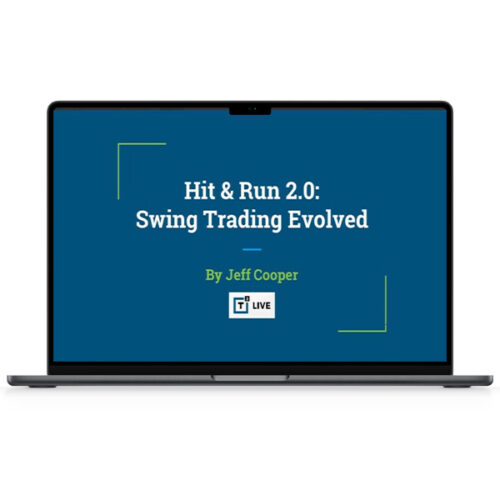 T3 Live – Hit & Run 2.0 Swing Trading Evolved by Jeff Cooper
$19.00
T3 Live – Hit & Run 2.0 Swing Trading Evolved by Jeff Cooper
$19.00 -
×
 Mark Wightley And Anthony Rousek – Super Affiliate Sniper
$29.00
Mark Wightley And Anthony Rousek – Super Affiliate Sniper
$29.00 -
×
 E-commerce Mentoring – E-commerce Wayfinder
$23.00
E-commerce Mentoring – E-commerce Wayfinder
$23.00 -
×
 Eric Partaker – Peak Performance Academy
$15.00
Eric Partaker – Peak Performance Academy
$15.00 -
×
 Thisu – Scale With Less
$18.00
Thisu – Scale With Less
$18.00 -
×
 Cole Gordon – 8 Figure Boardroom Mastermind
$48.00
Cole Gordon – 8 Figure Boardroom Mastermind
$48.00 -
×
 Trading Heroes – Zen8 Forex Hedging
$16.00
Trading Heroes – Zen8 Forex Hedging
$16.00 -
×
 Lit Trading Course
$19.00
Lit Trading Course
$19.00 -
×
 Justin Goff – How To Build A Massive Email List With Low-Priced Pocket Change Offers
$19.00
Justin Goff – How To Build A Massive Email List With Low-Priced Pocket Change Offers
$19.00 -
×
 Justing Phillips – The Last eCom Course
$24.00
Justing Phillips – The Last eCom Course
$24.00 -
×
 Storyworthy for Business by Matthew Dicks
$30.00
Storyworthy for Business by Matthew Dicks
$30.00 -
×
 Danny Miranda – Art Of Interviewing
$8.00
Danny Miranda – Art Of Interviewing
$8.00 -
×
 Ryan Lee – One Person Empire
$15.00
Ryan Lee – One Person Empire
$15.00 -
×
 Eric Siu – Digital XP 2024 (Updated)
$13.00
Eric Siu – Digital XP 2024 (Updated)
$13.00 -
×
 Pips & Profits – Full Pips & Profit Strategy
$16.00
Pips & Profits – Full Pips & Profit Strategy
$16.00 -
×
 Shannon Lohr – Factory 45
$14.00
Shannon Lohr – Factory 45
$14.00 -
×
 Manny Khoshbin – Real Estate Starter Program
$30.00
Manny Khoshbin – Real Estate Starter Program
$30.00 -
×
 Joshua Mayo – Pro YouTuber
$18.00
Joshua Mayo – Pro YouTuber
$18.00 -
×
 The Macrocompass – Monetary Mechanics Course
$19.00
The Macrocompass – Monetary Mechanics Course
$19.00 -
×
 Joe Troyer – Backlink Outreach Masterclass
$24.00
Joe Troyer – Backlink Outreach Masterclass
$24.00 -
×
 Nadine Rohner – Business Accelerator
$15.00
Nadine Rohner – Business Accelerator
$15.00 -
×
 Matt Diamante – Course Bundle
$13.00
Matt Diamante – Course Bundle
$13.00 -
×
 Agency Mavericks The Growth Plan Method
$21.00
Agency Mavericks The Growth Plan Method
$21.00 -
×
 Jim Fortin – EVOLVE Foundations
$37.00
Jim Fortin – EVOLVE Foundations
$37.00 -
×
![CRT AND TS Private Coaching Institute CRT Masterclass 101 [2024 July Updated]](https://genicourses.com/wp-content/uploads/2025/02/CRT-AND-TS-Private-Coaching-Institute-CRT-Masterclass-101-2024-July-Updated-500x500.jpg) CRT AND TS Private Coaching Institute CRT Masterclass 101 [2024 July Updated]
$14.00
CRT AND TS Private Coaching Institute CRT Masterclass 101 [2024 July Updated]
$14.00 -
×
 Elite Money Trader – The Master Indicator
$13.00
Elite Money Trader – The Master Indicator
$13.00 -
×
 Jimmy Farley – Organic TikTok Academy
$15.00
Jimmy Farley – Organic TikTok Academy
$15.00 -
×
 Chase Dimond – Client Acquisition Course
$24.00
Chase Dimond – Client Acquisition Course
$24.00 -
×
 Oliver – Google Ads Masters – Learn Google Ads the RIGHT WAY
$15.00
Oliver – Google Ads Masters – Learn Google Ads the RIGHT WAY
$15.00 -
×
 Gareth Soloway – Elite Keys To Unlimited Success
$15.00
Gareth Soloway – Elite Keys To Unlimited Success
$15.00 -
×
 Claire Zammit – Feminine Power The Essential Course for the Awakening Woman
$22.00
Claire Zammit – Feminine Power The Essential Course for the Awakening Woman
$22.00 -
×
 Kim Krompass – Price Action Traders Institute (PATI)
$30.00
Kim Krompass – Price Action Traders Institute (PATI)
$30.00 -
×
 ControllerFX – Market Controller Course 2023
$15.00
ControllerFX – Market Controller Course 2023
$15.00 -
×
 Pushman Mitch – Push Rental Car Academy
$24.00
Pushman Mitch – Push Rental Car Academy
$24.00 -
×
 Trading Dominion – Portfolio Margin and SPAN Margin Trading Tactics
$38.00
Trading Dominion – Portfolio Margin and SPAN Margin Trading Tactics
$38.00 -
×
 WondaFX Signature Strategy
$10.00
WondaFX Signature Strategy
$10.00 -
×
 Blessed Trader 2024
$10.00
Blessed Trader 2024
$10.00 -
×
 Dion Coopwood – DTD Credit Mentorship E-Course
$35.00
Dion Coopwood – DTD Credit Mentorship E-Course
$35.00 -
×
 Geometric Angles Applied To Modern Markets
$20.00
Geometric Angles Applied To Modern Markets
$20.00 -
×
 Axia Futures – Trading with Price Ladder and Order Flow Strategies
$19.00
Axia Futures – Trading with Price Ladder and Order Flow Strategies
$19.00 -
×
 Mentor Alchemy by Cat Howell
$22.00
Mentor Alchemy by Cat Howell
$22.00 -
×
 Katja Loom Academy – Ecommerce Analytics Mastery
$22.00
Katja Loom Academy – Ecommerce Analytics Mastery
$22.00 -
×
 Jaelin White – Business Builder Mastery
$25.00
Jaelin White – Business Builder Mastery
$25.00 -
×
 Gusten Sun – Fulltime Funnel Designer 3.0
$15.00
Gusten Sun – Fulltime Funnel Designer 3.0
$15.00 -
×
 Ayodeji Awosika – Medium Writing Superstars
$23.00
Ayodeji Awosika – Medium Writing Superstars
$23.00 -
×
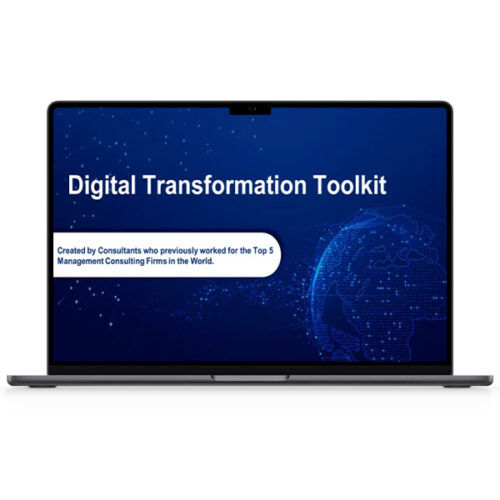 Domont Consulting – Digital Transformation Toolkit
$22.00
Domont Consulting – Digital Transformation Toolkit
$22.00 -
×
 Chase Reiner – AI Profits
$29.00
Chase Reiner – AI Profits
$29.00 -
×
 The Learn AI skills today – Start learning how to build and work with AI today
$15.00
The Learn AI skills today – Start learning how to build and work with AI today
$15.00 -
×
 Michael S. Jenkins Trading Video
$17.00
Michael S. Jenkins Trading Video
$17.00 -
×
 STOIC TRADER Oct -24 Data
$15.00
STOIC TRADER Oct -24 Data
$15.00 -
×
 INSIDE THE MIND OF TRADER STEWIE
$21.00
INSIDE THE MIND OF TRADER STEWIE
$21.00 -
×
 Austin Belcak – The Dream Job System
$23.00
Austin Belcak – The Dream Job System
$23.00 -
×
 Matthew Versteeg – Rank More Clients in More Areas 5 Days Challenge
$21.00
Matthew Versteeg – Rank More Clients in More Areas 5 Days Challenge
$21.00 -
×
 Ed Reay – The Lifestyle Copywriter
$20.00
Ed Reay – The Lifestyle Copywriter
$20.00 -
×
 Bree Melanson – Beyond Form
$23.00
Bree Melanson – Beyond Form
$23.00 -
×
 The Dopamine Texting Program
$15.00
The Dopamine Texting Program
$15.00 -
×
 Online Trading Academy – Core Strategy Program with XLT
$70.00
Online Trading Academy – Core Strategy Program with XLT
$70.00 -
×
 EME Integration Practitioner by Mandy Morris
$26.00
EME Integration Practitioner by Mandy Morris
$26.00 -
×
 Clone My SaaS – Profitable SaaS Clone it & Launch
$34.00
Clone My SaaS – Profitable SaaS Clone it & Launch
$34.00 -
×
 Steve Mellor – Automated Creator 2.0 Bundle
$27.00
Steve Mellor – Automated Creator 2.0 Bundle
$27.00 -
×
 Yasin Mammeri – Viral Video Course
$11.00
Yasin Mammeri – Viral Video Course
$11.00 -
×
 Ali Abdaal – Part-Time Creatorpreneur
$14.00
Ali Abdaal – Part-Time Creatorpreneur
$14.00 -
×
 The Wall Street Quants BootCamp
$13.00
The Wall Street Quants BootCamp
$13.00 -
×
 Dan Bacon – Dating Power – The Modern Man
$20.00
Dan Bacon – Dating Power – The Modern Man
$20.00 -
×
 Montell Gordon – Agency Transmutation (Week 1 to Week 7)
$35.00
Montell Gordon – Agency Transmutation (Week 1 to Week 7)
$35.00 -
×
 Robert Allen - 30 Days to $9K
$19.00
Robert Allen - 30 Days to $9K
$19.00 -
×
 SeoRockstars – 2023 Recordings
$19.00
SeoRockstars – 2023 Recordings
$19.00 -
×
 Julian Komar – Growth Traders Toolbox
$12.00
Julian Komar – Growth Traders Toolbox
$12.00 -
×
 Boyuan Zhao – E-commerce Email Masters 2.0
$29.00
Boyuan Zhao – E-commerce Email Masters 2.0
$29.00 -
×
 Tony Robbins – Personal Power
$10.00
Tony Robbins – Personal Power
$10.00 -
×
 Master of AI Copy – Copy School by Copyhackers
$20.00
Master of AI Copy – Copy School by Copyhackers
$20.00 -
×
 Lytbox Academy – Design with Elementor
$12.00
Lytbox Academy – Design with Elementor
$12.00 -
×
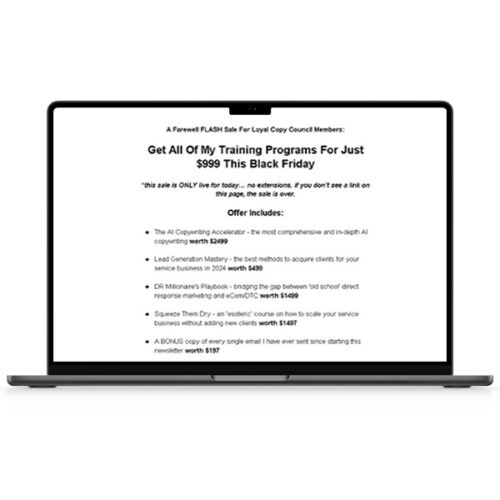 Zarak – Black Friday All Courses Bundle
$20.00
Zarak – Black Friday All Courses Bundle
$20.00 -
×
 Blog Growth Engine 4.0 by Adam Enfroy
$15.00
Blog Growth Engine 4.0 by Adam Enfroy
$15.00 -
×
 Anvar Jabirov – Ecom Creative Powerhouse
$18.00
Anvar Jabirov – Ecom Creative Powerhouse
$18.00 -
×
 Benjamin Benichou – Master Of Ai
$90.00
Benjamin Benichou – Master Of Ai
$90.00 -
×
 Annie Lalla – Heart Coach
$22.00
Annie Lalla – Heart Coach
$22.00 -
×
 Iman Gadzhi – Pen to Profit
$17.00
Iman Gadzhi – Pen to Profit
$17.00 -
×
 TOM & HARRY – Digital Culture Academy
$21.00
TOM & HARRY – Digital Culture Academy
$21.00 -
×
 Sam Ovens – UpLevel Consulting
$13.00
Sam Ovens – UpLevel Consulting
$13.00 -
×
 Steve Siebold – Bill Gove Speech Workshop
$14.00
Steve Siebold – Bill Gove Speech Workshop
$14.00 -
×
 Capital Club
$17.00
Capital Club
$17.00 -
×
 Casey Zander – Masculinity Blueprint ACCELERATOR 2.0
$19.00
Casey Zander – Masculinity Blueprint ACCELERATOR 2.0
$19.00 -
×
 Jim Dalton – Winter 2024 Intensive – Course
$20.00
Jim Dalton – Winter 2024 Intensive – Course
$20.00 -
×
 Jason Stapleton – Traders Workshop Forex
$10.00
Jason Stapleton – Traders Workshop Forex
$10.00 -
×
 Ready Set Crypto – Crypto Bootcamp All You Need To Know To Make $$ With Crypto
$15.00
Ready Set Crypto – Crypto Bootcamp All You Need To Know To Make $$ With Crypto
$15.00 -
×
 Social Media Marketing (SMMA) & Consulting – 25 Courses Bundle
$48.00
Social Media Marketing (SMMA) & Consulting – 25 Courses Bundle
$48.00 -
×
 Raja Choudhury – Kundalini Advanced Shakti Initiation
$24.00
Raja Choudhury – Kundalini Advanced Shakti Initiation
$24.00 -
×
 Allison Lancaster – Google Web Stories Masterclass
$15.00
Allison Lancaster – Google Web Stories Masterclass
$15.00 -
×
 Shruti Pangtey – Digital Product Academy+Video Creator Bootcamp
$13.00
Shruti Pangtey – Digital Product Academy+Video Creator Bootcamp
$13.00 -
×
 G-Doc Sales Papi – Sean Anthony
$13.00
G-Doc Sales Papi – Sean Anthony
$13.00 -
×
 SpotGamma Academy
$15.00
SpotGamma Academy
$15.00 -
×
 Pollinate Trading – Systems Building With AI
$34.00
Pollinate Trading – Systems Building With AI
$34.00 -
×
 Affiliate Marketing Course – Finance Simple
$18.00
Affiliate Marketing Course – Finance Simple
$18.00 -
×
 Skipping Levels All Access – Pass Peggy McColl
$24.00
Skipping Levels All Access – Pass Peggy McColl
$24.00 -
×
 John Pocorobba – Earnings Reaction Gaps Workshop
$35.00
John Pocorobba – Earnings Reaction Gaps Workshop
$35.00 -
×
 Gova Trading Academy – Cluster Delta – Course
$15.00
Gova Trading Academy – Cluster Delta – Course
$15.00 -
×
 Faceless Instagram Page Launch Kit
$12.00
Faceless Instagram Page Launch Kit
$12.00 -
×
 Doug O’Brien – Sleight of Mouth Group Study Program
$22.00
Doug O’Brien – Sleight of Mouth Group Study Program
$22.00 -
×
 Lewis Mocker – Power Couple Masterclass
$22.00
Lewis Mocker – Power Couple Masterclass
$22.00 -
×
 Backtest Wizard – Flagship Trading Course
$15.00
Backtest Wizard – Flagship Trading Course
$15.00 -
×
 Exponential Gains – Todd Walsh
$4.00
Exponential Gains – Todd Walsh
$4.00 -
×
 Finserv Corp Complete Course
$3.00
Finserv Corp Complete Course
$3.00 -
×
 Julien Blanc – The Purpose Process Elite online Coach Edition
$24.00
Julien Blanc – The Purpose Process Elite online Coach Edition
$24.00 -
×
 Raul Gonzalez – Day Trading Institution 2.0
$24.00
Raul Gonzalez – Day Trading Institution 2.0
$24.00 -
×
 Daniel Foley Carter – SEO Webinar Bundle Course
$28.00
Daniel Foley Carter – SEO Webinar Bundle Course
$28.00 -
×
 Spencer Glasgow – Amazon Seller Academy
$24.00
Spencer Glasgow – Amazon Seller Academy
$24.00 -
×
 Tim Grover The Relentless System
$10.00
Tim Grover The Relentless System
$10.00 -
×
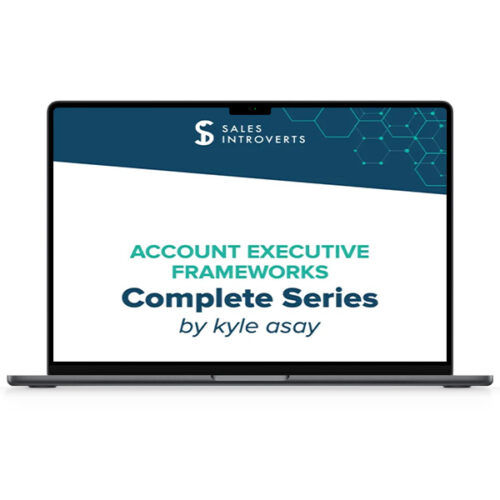 Kyle Asay – Account Executive Frameworks 2.0
$22.00
Kyle Asay – Account Executive Frameworks 2.0
$22.00 -
×
 Sean D’Souza – Psychotactics Info Product Home Study
$24.00
Sean D’Souza – Psychotactics Info Product Home Study
$24.00 -
×
 Weider – X-Factor ST 8 Week Training
$13.00
Weider – X-Factor ST 8 Week Training
$13.00 -
×
 Matt Gray – LinkedIn for CEOs
$15.00
Matt Gray – LinkedIn for CEOs
$15.00 -
×
 Mike Valtos – Orderflows Unlocked Advanced Trade Encyclopedia November 2024 (Complete 4 parts)
$22.00
Mike Valtos – Orderflows Unlocked Advanced Trade Encyclopedia November 2024 (Complete 4 parts)
$22.00 -
×
 Matt Leitz and Liz Raad – eBusiness Institute
$19.00
Matt Leitz and Liz Raad – eBusiness Institute
$19.00 -
×
 Jim Kwik – Kwik Recall Memory Masterclass
$15.00
Jim Kwik – Kwik Recall Memory Masterclass
$15.00 -
×
 Russ Horn – Ultra Blue Forex 2024
$18.00
Russ Horn – Ultra Blue Forex 2024
$18.00 -
×
 No-Code Architects
$19.00
No-Code Architects
$19.00 -
×
 Automated Trading Strategies (NEW) – November 2024
$44.00
Automated Trading Strategies (NEW) – November 2024
$44.00 -
×
 Leah Kay – Brand Builder Academy 2023
$18.00
Leah Kay – Brand Builder Academy 2023
$18.00 -
×
 David Tian – Emotional Mastery
$15.00
David Tian – Emotional Mastery
$15.00 -
×
 Travis Sago – Make Em Beg to Buy (Gimme Diamond Level)
$19.00
Travis Sago – Make Em Beg to Buy (Gimme Diamond Level)
$19.00 -
×
 Hayden Hillier-SmithE – Edit Like an Artist
$20.00
Hayden Hillier-SmithE – Edit Like an Artist
$20.00 -
×
 Kenneth Yu – Infinity Engine – Content Creation Workshop
$20.00
Kenneth Yu – Infinity Engine – Content Creation Workshop
$20.00 -
×
 Traf – Framer Training
$13.00
Traf – Framer Training
$13.00 -
×
 Trading Tools Mastery Course with Todd Gilbert
$14.00
Trading Tools Mastery Course with Todd Gilbert
$14.00 -
×
 Ginny & Laura – Instant Business Academy
$18.00
Ginny & Laura – Instant Business Academy
$18.00 -
×
 Trading Freak Academy (Full Course)
$15.00
Trading Freak Academy (Full Course)
$15.00 -
×
 Justin Goff – The Ultimate Email Bundle
$13.00
Justin Goff – The Ultimate Email Bundle
$13.00 -
×
 Bob Proctor – Principles Of Prosperity
$16.00
Bob Proctor – Principles Of Prosperity
$16.00 -
×
 Philip Vandusen Brand Strategy
$15.00
Philip Vandusen Brand Strategy
$15.00
Sale!
Central Banking – Secured Money Markets 201
Original price was: $100.00.$17.00Current price is: $17.00.
- 24/7 Contact Support & Fast Chat
- Original Courses HD Quality
- Courses Are Updated
- Checked Download Links
- Guaraneed Safe Checkout
Description
Central Banking – Secured Money Markets 201
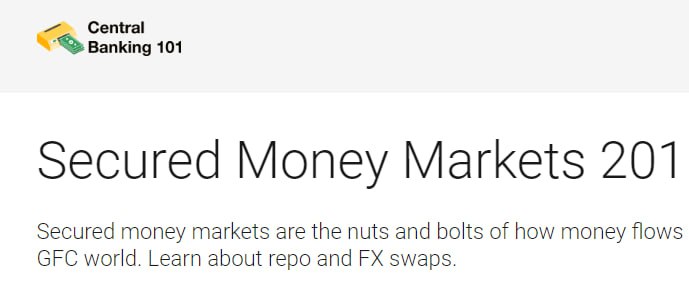
Secured Money Markets 201 Course: Master the Fundamentals of Repo and FX Swap Markets
Welcome to the Secured Money Markets 201 course, a comprehensive exploration of the crucial roles secured money markets—specifically the repo and FX swap markets—play in the global financial system. Designed for finance professionals and enthusiasts alike, this course delves deeply into these essential markets’ mechanics, market segments, and key participants. Understanding these markets is vital for anyone involved in financial institutions, investment strategies, or monetary policy.
The course is particularly valuable for grasping the nuances of market operations post-Global Financial Crisis (GFC) and the ongoing influence of central banks.
What Will You Learn in the Secured Money Markets 201 Course?
Understanding the Repo Market
What is the Repo Market?
The repo market, short for repurchase agreement market, is a vital component of the financial system that provides short-term borrowing and lending facilities. In a repo transaction, one party sells securities to another party with an agreement to repurchase them at a higher price on a future date. This mechanism is crucial for managing short-term funding needs and ensuring liquidity within financial institutions.
Transactional Mechanics of Repo Markets:
- How Does a Repo Transaction Work?
- In a repo transaction, the seller (borrower) transfers securities, often government bonds or other high-quality assets, to the buyer (lender). The agreement includes a repurchase date and a higher repurchase price, with the difference between the sale and repurchase prices representing the interest paid on the loan. This process is a key tool for financial institutions to manage their liquidity and short-term funding requirements.
- Collateral and Market Segments:
- Repos are typically collateralized by high-quality securities, ensuring security for the lender. The market segments include Tri-Party Repos, where a third party, usually a clearing bank, facilitates the transaction and manages the collateral, and Bilateral Repos, which are direct transactions between two parties. Additionally, repos can be classified into Specials, where specific securities are in high demand and trade at lower interest rates, and General Collateral (GC), which involves more generic securities traded at standard rates.
Key Participants in the Repo Market:
- Dealer Banks:
- Dealer banks are primary participants in the repo market, engaging in large-scale borrowing and lending. Their role is crucial in maintaining liquidity and ensuring the smooth functioning of financial markets.
- Hedge Funds and Asset Managers:
- These entities utilize repos to finance their positions and manage liquidity. By leveraging repo transactions, they can optimize their investment strategies and maintain financial flexibility.
- Central Banks:
- Central banks, including the Federal Reserve, engage in repos as part of their monetary policy operations. Through open market operations and the Standing Repo Facility (SRF), central banks manage liquidity in the banking system, ensuring financial stability and effective monetary policy implementation.
Delving into the FX Swap Market
What is the FX Swap Market?
The FX swap market involves the exchange of currencies between two parties, with an agreement to reverse the transaction at a future date at a predetermined rate. This market is essential for managing currency risk and liquidity in global financial markets, providing a mechanism for entities to obtain foreign currency funding and hedge currency exposure.
Transactional Mechanics of FX Swaps:
- How Do FX Swaps Work?
- In an FX swap transaction, the parties exchange currencies at the spot rate and agree to reverse the transaction at a forward rate. The difference between the spot and forward rates reflects the interest rate differential between the two currencies. This mechanism helps banks and corporations manage currency risk and secure foreign currency funding.
- Market Segments:
- The FX swap market includes short-term swaps, typically from overnight to a few days, used for immediate liquidity needs, and longer-term swaps extending up to a year or more, often used for hedging long-term currency exposures.
Key Participants in the FX Swap Market:
- Commercial Banks:
- Major players in the FX swap market, commercial banks use swaps for liquidity management and currency risk hedging. Their involvement is crucial for maintaining stability in currency markets and providing liquidity.
- Central Banks:
- Central banks engage in FX swaps to influence currency markets and stabilize exchange rates. The Federal Reserve, for example, establishes swap lines with other central banks to provide liquidity in US dollars during times of market stress.
- Corporates:
- Corporations use FX swaps to manage exposure to foreign currency risk in international transactions. By leveraging these swaps, they can mitigate the impact of currency fluctuations on their financial operations.
The Fed’s Involvement in Secured Money Markets
How Does the Fed Influence the Repo Market?
The Federal Reserve plays a significant role in the repo market through open market operations and the Standing Repo Facility (SRF). These tools allow the Fed to manage liquidity in the banking system and support effective monetary policy implementation.
- Open Market Operations:
- The Fed uses repos and reverse repos to manage short-term liquidity and influence interest rates. The Fed can inject or withdraw liquidity from the financial system by engaging in these transactions, affecting overall market conditions and monetary policy.
- Standing Repo Facility (SRF):
- Introduced post-GFC, the SRF provides eligible banks with direct Fed liquidity access. This facility ensures that banks have a reliable funding source during periods of market stress, contributing to overall financial stability.
How Does the Fed Manage Currency Liquidity Through FX Swaps?
In times of financial crises or market stress, the Fed’s FX swap lines are crucial in preventing disruptions in global dollar funding. These swap lines allow the Fed to provide liquidity in US dollars to foreign central banks, which can then supply their own currencies to local banks and institutions.
- Swap Lines:
- The Fed establishes swap lines with other central banks to facilitate currency exchange and provide liquidity during periods of market strain. These arrangements are vital for maintaining stability in global financial markets and ensuring that the flow of US dollars remains uninterrupted.
- Crisis Management:
- During financial crises, the Fed’s FX swap lines play a critical role in stabilizing currency markets and preventing liquidity shortages. By offering support to foreign central banks, the Fed helps mitigate the impact of market disruptions and maintain financial stability.
Why Enroll in the Secured Money Markets 201 Course?
Comprehensive Understanding of Critical Markets:
The Secured Money Markets 201 course offers a thorough exploration of the repo and FX swap markets, providing participants with essential insights into their mechanics, segments, and key participants. This understanding is crucial for navigating the complexities of the financial system and effectively managing liquidity and currency risk.
Expertise in Central Banking Operations:
By delving into the Fed’s involvement in these markets, the course equips learners with valuable knowledge about central banking operations and their impact on financial stability. This expertise is beneficial for anyone involved in monetary policy, financial regulation, or market analysis.
Practical Application and Real-World Relevance:
The course’s focus on practical application ensures that participants can translate their learning into real-world scenarios. Whether you’re a finance professional, policymaker, or academic, the insights gained from this course will enhance your ability to understand and navigate the financial system.
Enhanced Career Opportunities:
A comprehensive understanding of secured money markets and central banking operations can significantly enhance career prospects in finance, economics, and related fields. The Secured Money Markets 201 course provides the knowledge and skills needed to excel in these areas and advance your career.
Conclusion
The Secured Money Markets 201 course offers a deep dive into the critical components of the financial system, focusing on the repo and FX swap markets. With its detailed exploration of transactional mechanics, market segments, key participants, and the role of the Federal Reserve, this course equips learners with a comprehensive understanding of these essential markets. Whether you’re looking to enhance your financial expertise, improve your career prospects, or gain valuable insights into central banking operations, the Secured Money Markets 201 course is an invaluable resource for achieving your goals.
Enroll today and gain the knowledge needed to master the intricacies of secured money markets and their role in the global financial system.









